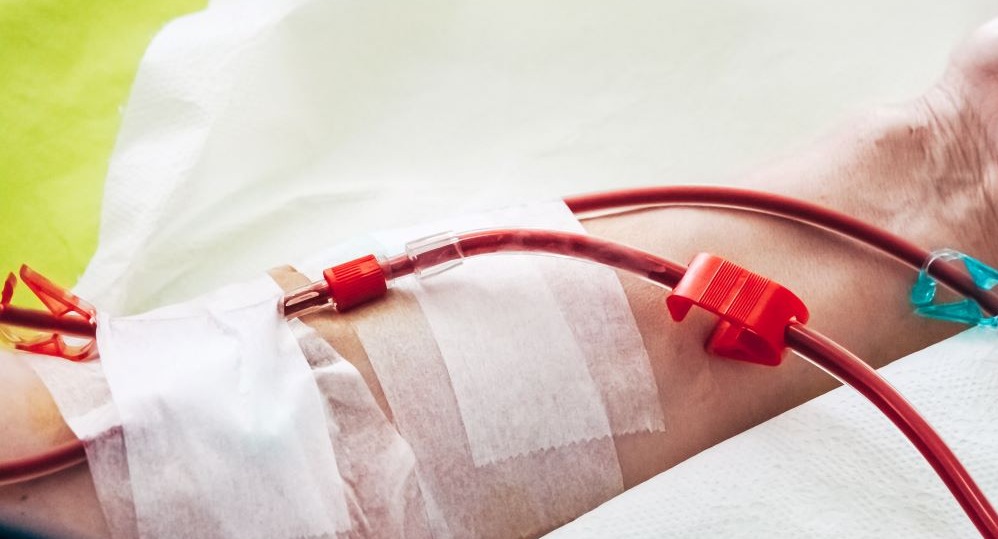Smart Fistula Needle For Safe Fistula Cannulation And Other Vascular Procedures

KEY INFORMATION
TECHNOLOGY OVERVIEW
Many vascular procedures such as central venous catheter insertion, dialysis catheter insertion, arterial angiograms, etc requires a skilled personnel to complete the task. A fistula used for example, in haemodialysis, is a direct connection of an artery to a vein. Once the fistula is created it is a natural part of the body. When the fistula properly matures, it provides an access with good blood flow that can last for decades. The gold-standard for access is an AV fistula.
The success of an AV fistula procedure and vascular cannulation procedures depend on the skill of the medical professional. Potential difficulties during the procedure include:
- Multiple venepunctures attempts before successful cannulation
- Accidental puncture of the front vessel wall due to deep insertion
- Accidental puncture of the opposite side of the vessel wall while inserting the needle further upstream
- Inadvertent punction of the opposing vessels.
Endovascular surgeons, therefore, need an improved device for penetrating the vessel wall during cannulation procedure.
This technology is of a smart needle which can reliably gauge the intravascular position of distal end of the needle and detect vessel wall penetration. The device protects against needlestick accidents and accidental back walling of fistula wall. It avoids accidental puncturing of the opposing vessel wall and prevents accidental back-walling during the cannulation procedure by automatically deploying a smart sensing stylet after successful needle puncture of vessel wall.
The technology owner is seeking for medical device manufacturers, clinical collaborators, and independent dialysis centres to conduct first-in-human studies.
TECHNOLOGY FEATURES & SPECIFICATIONS
The proposed smart vessel wall penetration detection system consists of a spring actuated smart sensing stylet to prevent accidental back walling of the fistula wall during cannulation, and a flashback chamber to gauge the intravascular position of the needle during puncture. The trigger engages the said stylet, during the cannulation process to shield/retracting and expose/release the needle respectively. Two haemostasis valves are incorporated into the device: one located at the trigger housing to prevent blood leakage into said trigger; the other in the catheter housing to reduce and prevent blood leakage during needle removal. Both needle and said stylet will be removed from the device while retaining the flexible catheter tube inside the fistula to proceed with the dialysis session
In summary, the proposed system has these key features:
- Smart sensing stylet is in extended mode prior to use to protect user from accidental needlestick compared to conventional fistula needles.
- Sensing means (flashback chamber) to gauge the intravascular position of the distal end of the needle.
- Spring actuated trigger that conceals smart stylet to enable puncture of fistula wall followed by automatic propulsion of said stylet upon release of trigger.
- Removable needle and said stylet to provide a safer and more comfortable dialysis session.
POTENTIAL APPLICATIONS
This technology can be applied to endovascular procedures such as AV fistula cannulation, central venous catheter insertion, dialysis catheter insertion, arterial angiogram. The global A.V. Fistula Needles market size alone was valued at USD 191.4 million in 2022 and is forecast to a readjusted size of USD 312.9 million by 2029 with a CAGR of 7.3% during review period.
Market Trends & Opportunities
The growing worldwide incidence of End Stage Renal disease is expected to drive the demand for dialysis treatment, and thereby the need for safer, smarter AV Fistula needles. Globally, it is expected that around 2 million people are affected with ESRD each year (Source: USRDS Annual Data Report (2021). The global hemodialysis market in terms of revenue was estimated to be $76.9Bn in 2021 and is poised to reach $105.1Bn in 2026 with a CAGR if 6.4%. APAC markets such as China, India, Japan and Singapore are expected to offer significant growth opportunities for players in the hemodialysis market. Taiwan and Malaysia have the highest incidence of ESRD in 45-65 and > 75 age group as per US Renal Data System (2020 Annual Report)
Unique Value Proposition
- A smart needle that enables physicians have better control of the cannulation procedure and gauge the intravascular position of the distal end of the needle.
- Provide safer cannulation procedure to patients by preventing accidental punctures and back-walling of vascular vessels
- Provide a more effective fistula cannulation by avoiding puncture complications, which enables patients to have a more comfortable dialysis session
